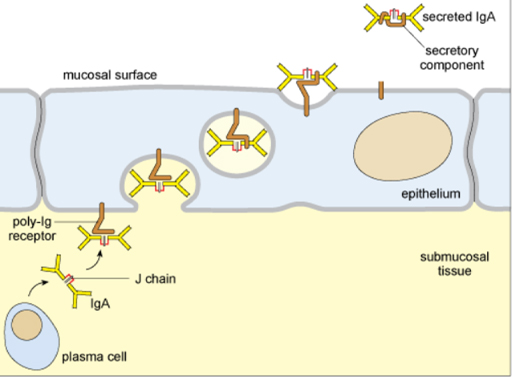3.2 Protection of mucosal surfaces
It was mentioned earlier that IgA antibodies can be produced as secreted molecules. In this case, the antibody is transferred across epithelial cells from the basal (tissue) side to the apical (exterior) side of the epithelium exposed at the mucosal surface. You can see the mechanism outlined in Figure 11.
Dimeric IgA produced by plasma cells binds to a poly-Ig receptor on the basal surface of an epithelial cell. It is transported across the cell in a vesicle and then released at the mucosal surface as secreted IgA. The secretory component of secreted IgA is derived from the poly-Ig receptor. IgA in mucosal secretions is particularly important in protecting the epithelium against infection with respiratory viruses, such as influenza, rhinoviruses and SARS-CoV2.

